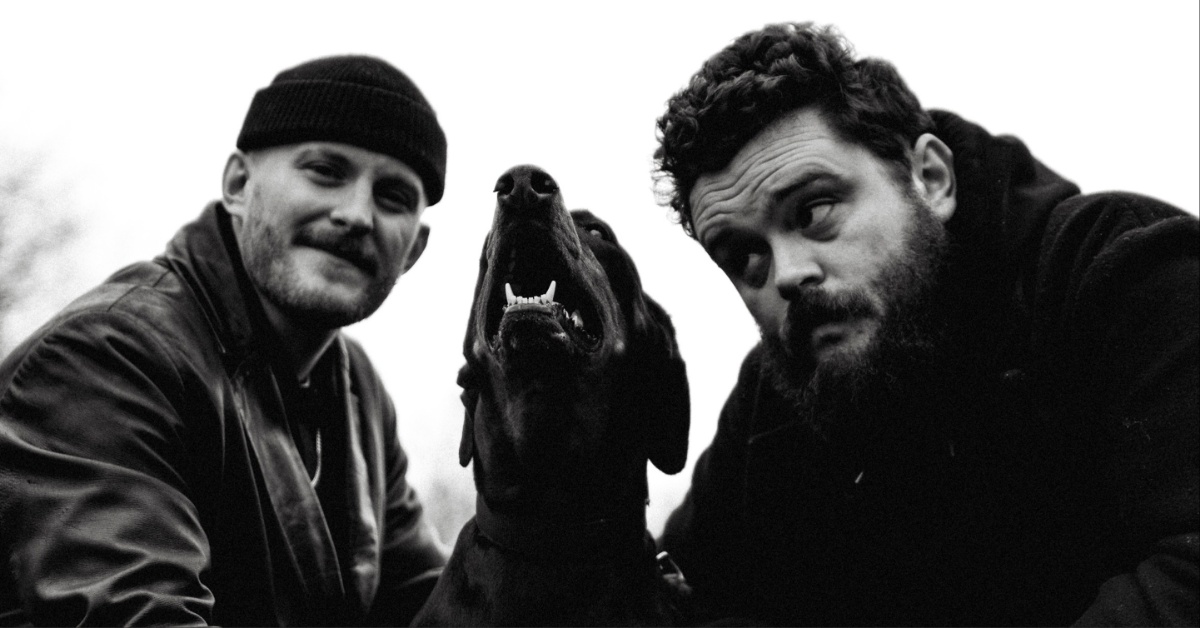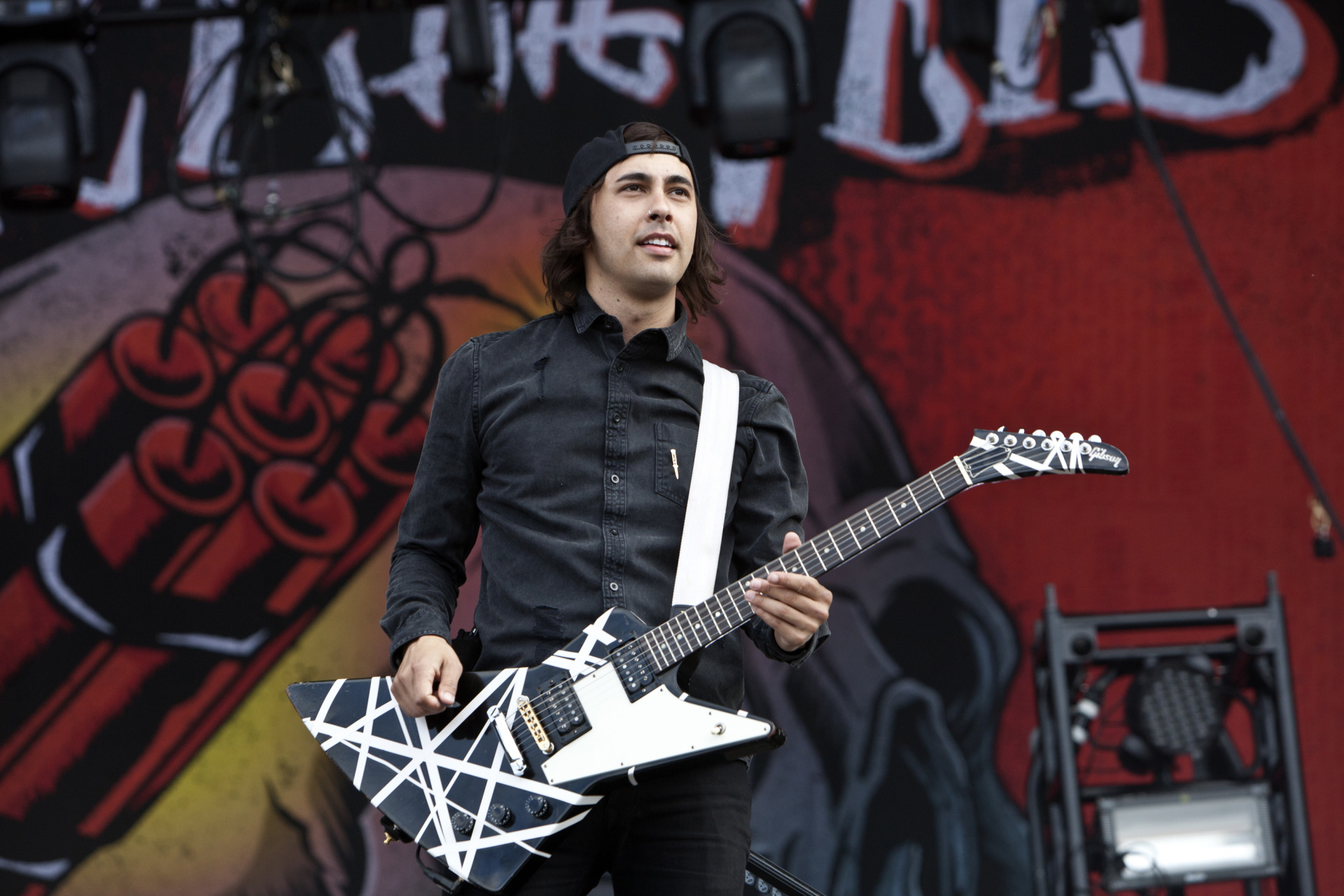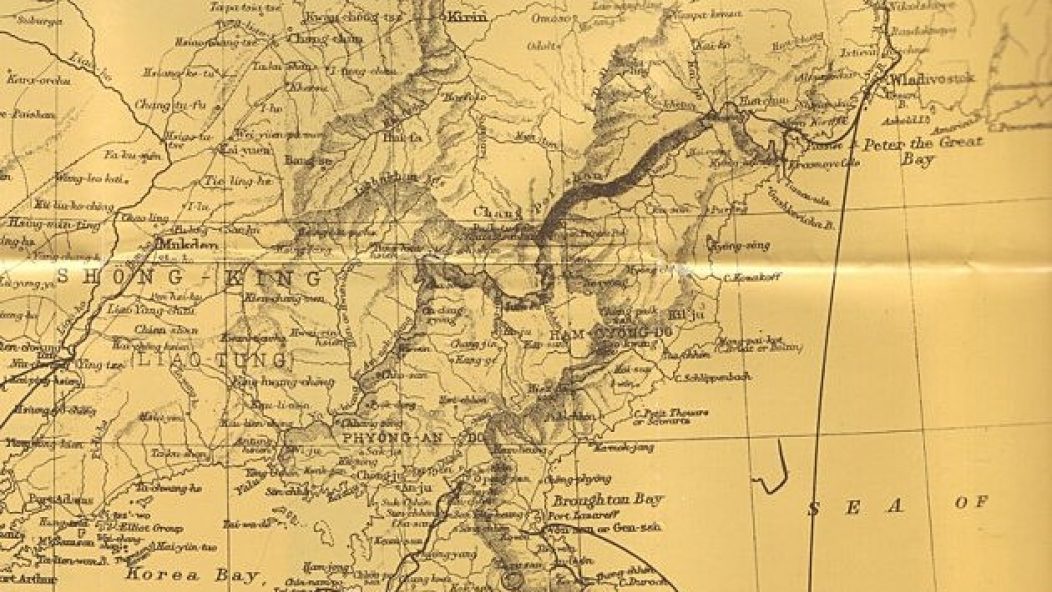
A History of South Korean Metal and Hardcore Punk Part 3.
…
THE SCENE TODAY
…
This is the second of a three-part article chronicling the history of extreme music in South Korea.
Read Part I here and Part II here.
…
Today, most kinds of music promotion in South Korea happen online, with diminutive mainstream attention and downloadable albums. Promoters and organizers often use multiple social network platforms to endorse bands and shows with very little printed advertising. There were, however, a decent number of fanzines made by Koreans and expatriates that discuss the subcultures and review new releases during the early 2000s.
Victor Ha, singer of Things We Say said, “Jung Chang-hoon—A.K.A. Mizno—writes a zine called Bool-on-seo-juck, which is an important way to spread music news. Like any other place, people don’t buy CDs as much. They download and stream music online. I started the Break the Shell fanzine in 2004. I had about three issues and stopped, but that doesn’t mean the third one was the final issue. I would love to make some more. I made the In Walnut We Trust fanzine especially for the Cheonan—the city that I live in—scene. I put out the first issue in 2011 and that was all.”
“Bands promote each other and book gigs for each other, too. Owners of clubs where bands perform and label owners who distribute the music also play an important role,” said Lee Hwan-ho of Mangnani, as well as Avaddon Records.
Jon Dunbar operates a website where he documents shows in Korea. “When I moved to Korea, my hometown had a message board called Indecline.net. They hosted space for me to upload my photos, and it became known as Daehanmindecline,” he said.
“In 2005, I co-founded Broke in Korea, which served as both a printed zine and a message board for discussion of the Korean punk scene in English. The message board is long gone and we’re up to issue 18 of the zine, which will celebrate its 10-year anniversary next year,” Dunbar said.
Newcomers and foreigners have helped create interest in the Korean underground music scene, working to advertise shows and record bands in non-professional settings. Binary Studios, run by punk rock band …Whatever That Means—who formed in 2009—helps record and distribute underground punk music with a DIY ethic.
“We recorded our latest full-length album and the first Rudy Guns album out of our home studio,” says Jeff Moses, the guitarist and singer in …Whatever That Means.
…
…Whatever That Means
…
Moses and his wife Trash [her stage name], bassist and singer of …Whatever That Means, have been active for almost six years, promoting shows and releasing albums for Korean bands under the name World Domination, Inc. They also released the compilation Them & Us: Korea’s Punks at Club Spot, which was received relatively well.
…
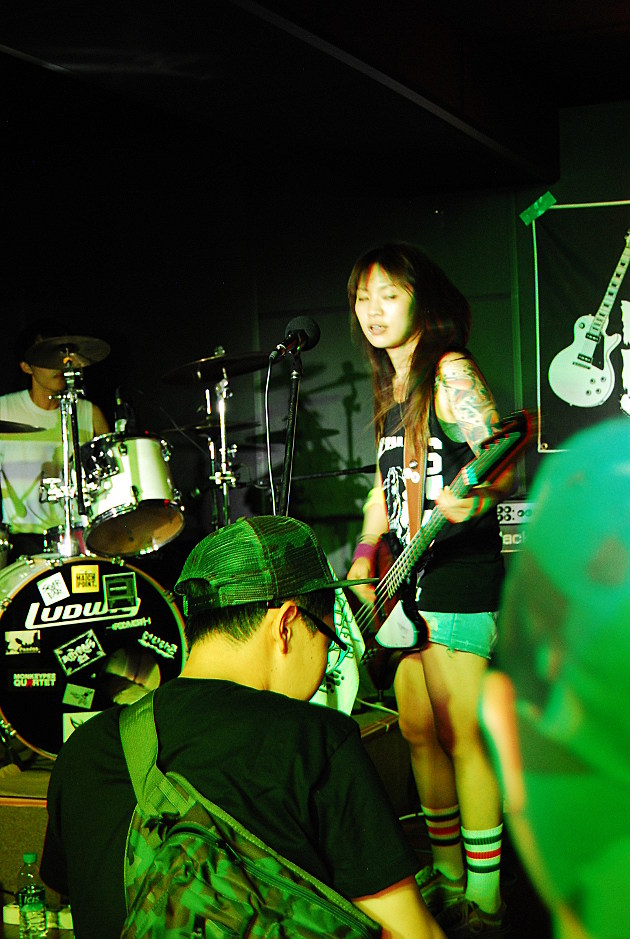
…
“New bands of various genres keep on forming and the general musical quality of bands is also improving. Some Korean bands have even signed contracts with foreign labels—Dark Mirror ov Tragedy would be an example. Record labels are also helping to promote the bands and spread their music. There are also many clubs and bars where bands play shows and gigs, but sadly a few places are closing down lately,” says Lee Hwan-ho of Mangnani.
…
Dark Mirror Ov Tragedy
…
Jusin Productions, owned by black metal band Oathean leader Kim Do-su, began producing albums for bands like Metamorphosis, a death metal band that formed in 2012 in Seoul, and melancholic black metal act Skald, who formed originally in 1997 as Imoned. Kim also operates Club Sapiens 7, a hotspot for metal and hardcore shows where he promotes Korean and international acts alike.
…
Skald
…
Underground shows usually occur in Seoul, concentrated in the Hongdae area at Rolling Hall, V-Hall, Badabie’s, Club Prism and, until this year, Club Spot, which is now officially shut down. Moses organized a yearly Halloween show called “Still Alive,” which doubled as Club Spot’s final show before it closed and successfully drew in over 300 people, which vastly exceeds normal turnouts at hardcore and metal shows.
“Most shows are put on by promoters who are independent of clubs. We know which clubs like us having shows because we get better deals from them,” he said.
The problem with the hardcore and metal venues is that they draw in weak attendance, with even larger acts failing to pull revenue. They make minor drink sales and many of the attendants are non-paying band members.
“If there is a small show, there would be about 30 to 40 people show up. And to bigger shows there would be about 80 people,” says Ha of hardcore shows.
…
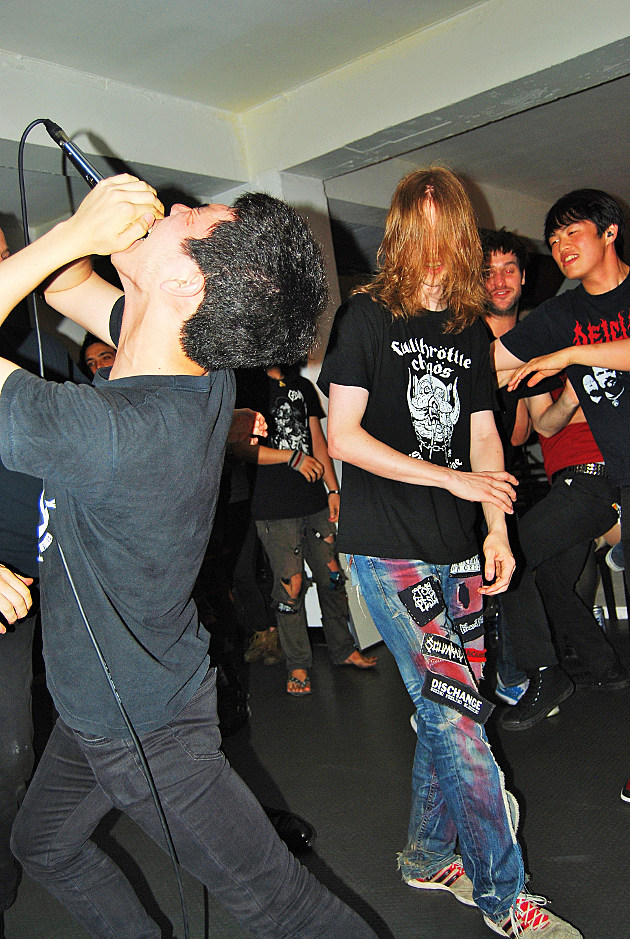
…
Ticket prices have remained the same over the years with the exception of larger acts. When At the Gates—with only 40 or 50 people in attendance—visited Prism Hall in 2013, tickets were 70,000 won (around 66 USD), then Napalm Death at 70,000 won and finally Carcass at 80,000 won in 2014.
…
Sagal
…
Today, the influences and sounds in the punk scene have disunited to comprise a larger variety of genres with bands like Sagal (raw punk), Dead Gakkahs (powerviolence), The Kitsches (melodic hardcore punk), My Man Mike (grindcore), Yuppie Killer (hardcore punk in the vein of Siege or Hoax) and The Veggers (punk-inspired rock).
…
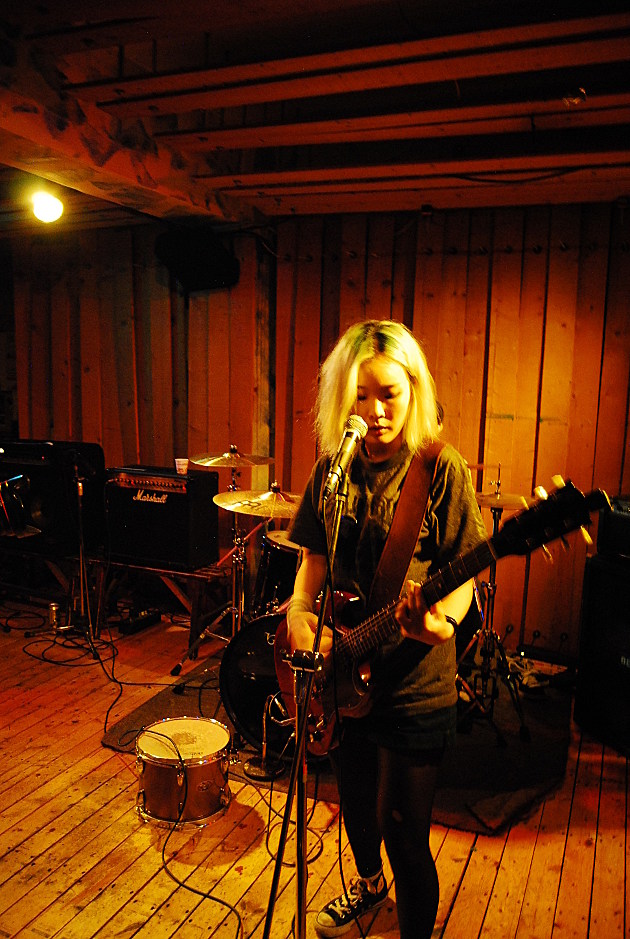
…
Dead Gakkahs
…
There are bands that cross genres like Scumraid, who mix raw punk and thrash, working as a buffer for eclectic shows that might include Nahu (a two-piece grindcore band), Gonguri (a doom metal band) and even Huqueymsaw, a raw black metal band who find guidance in the second wave of Scandinavian black metal, with resemblances ranging from Mayhem’s Deathcrush EP to Emperor’s not-so-raw IX Equilibrium.
…
Gonguri
…
Often times, going to an underground hardcore show will mean hearing a medley of other genres like raw punk, hardcore punk, noise, thrash, grindcore, doom or black metal. With the scene splintering into different factions, members and promoters find it easier and more advantageous to book a diverse lineup.
…
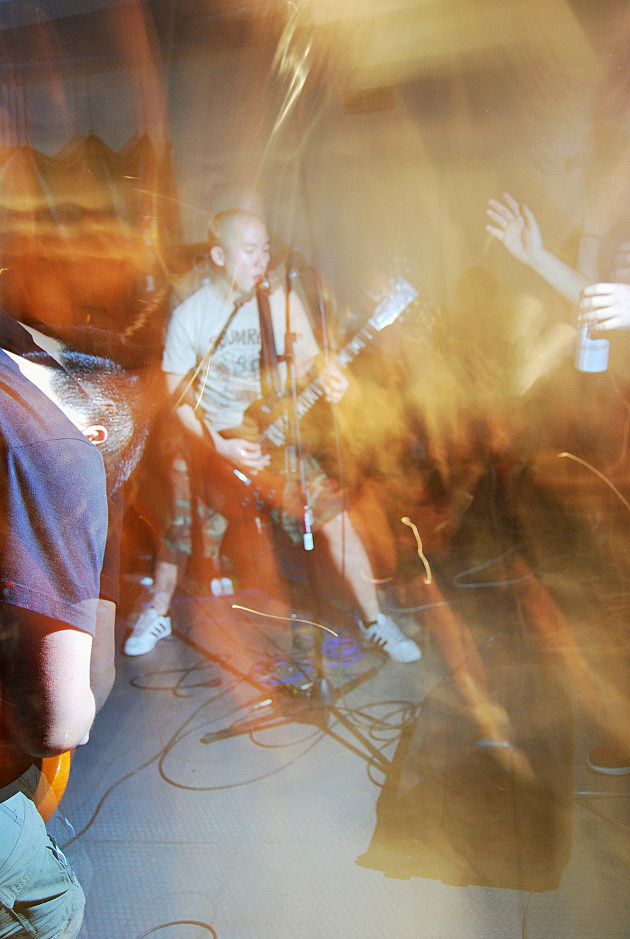
…
“These days, there are more and more venues that have punk and hardcore shows. However, very few of them are owned by people in the punk or hardcore scene. Fortunately, rental prices have also gone down, so promoting a show isn’t going to risk a week’s pay for the organizer,” said Dunbar.
…
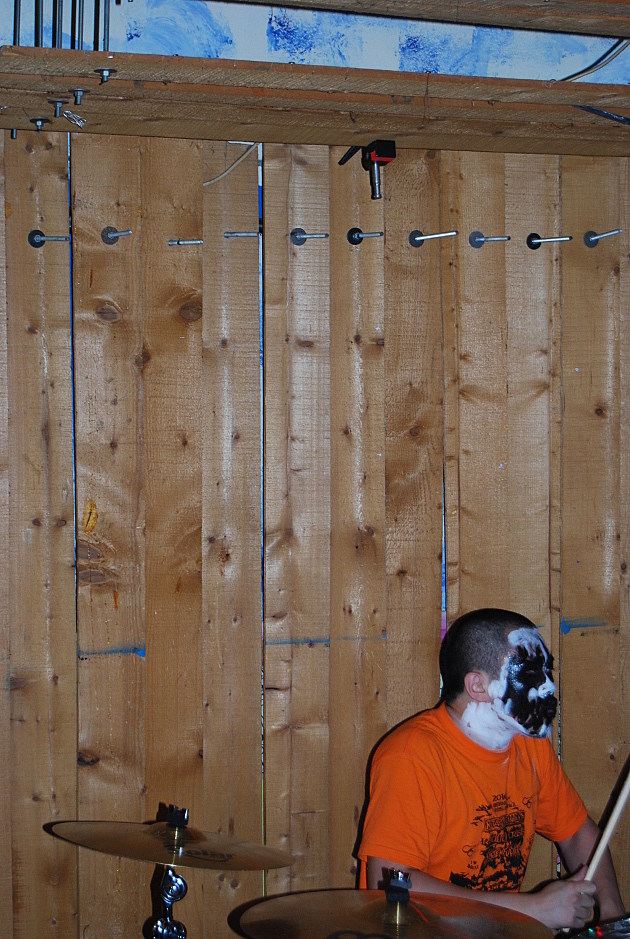
…
“There are large-scale concerts like the Jisan Rock Festival and the Songdo Rock Festival, which did not exist in ’80s and ’90s, but even they are becoming too commercialized to attract classic rock and heavy metal fans,” said Jang Jae-won of Goatphomet.
…
Goatphomet
…
Yi Ki-bong, a festival sound technician, explained that Korean companies began promoting their own festivals, like the Ssamzie Sound Festival and the Busan International Rock Festival, to monopolize. “In the last 10 years so many good bands actually visited Korea: Nightwish, Royal Hunt, Devin Townsend, Neil Zara, Soil Work, Arch Enemy, Cannibal Corpse, Steve Vai, Richie Kotzen, Ego Wrapping, Deicide, U.F.O., Andrew W.K., Shadows Fall and Overkill,” said Yi Ki-bong.
Though there are new bands forming and thriving, many bands enter stagnancy or terminate as members resign to enter the military or peruse career choices. Foreigners are constantly exiting the country due to most English language teachers signing one-year contracts.
“The scene hasn’t grown that much over the decade I’ve lived here even though this is a city [Seoul] of 10 million people with another 10 million in the surrounding area. I’d say you could probably fit every member of the punk/hardcore scene in a 747 and still have extra seats left over,” said Dunbar.
Jang Jae-won explained that Fallen Angel Productions has been struggling lately as their target audience is dwindling. “We try our best but our label’s main genres—death metal, black metal and gothic metal—are too minor that we are not getting enough response from people in Korea. If you happen to pay attention to the Korean extreme metal scene, look into Fallen Angels Production and Misanthropic Arts Production.”
Despite expanding the underground community at large and widening musical influence for patrons, Dunbar said many times that new rock or punk bands will have little choice but to play a hardcore punk show for lack of opportunities. Korean underground bands rarely travel outside Korea, with exceptions for The Geeks, Scumraid and …Whatever That Means.
…
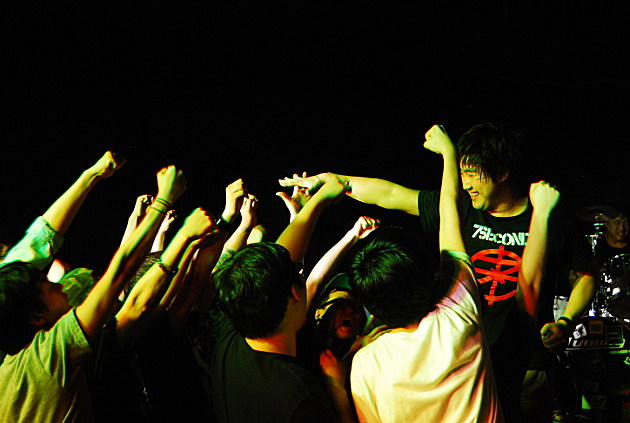
…
“Socially Korea is very similar to where the US was a couple of generations ago. Once the novelty of having material wealth wears off and people realize that there remains a need to find more meaningful ways of expression, I believe Korea will go through an artistic renaissance for all forms of music and creativity,” said Ian Henderson, writer for Groove Magazine, an expatriate magazine focusing on entertainment in Korea.
Though creative strides have been made, the Confucian-based society favors homogeny and looks down on individuals that promote alternative ideologies and fluctuate from the accepted mainstream culture.
…
The Geeks
…
“Just like every country on the globe, punks and metalheads always get criticized by people. Many [in Korea] still believe that that sort of music is bad for their children and is evil. Many people are ignorant of the underground music scene and think that the few popular bands are the only people who play such music,” said Lee Hwan-ho of Mangnani.
Moses has been more active in the punk scene, following up a successful Halloween show with the initiation of a new label. “Our latest venture is starting a more legitimate record label and promoting company with Burning Hepburn vocalist Song Won-suk and SkaSucks vocalist Jin Sucks. It’s called Rock Whale Company and is just getting off the ground,” he said.
Ostensibly frantic and fissured, the Korean underground scene has made great strides in its compact evolution since the late 1980s. With observers being unsure of its current direction and lack of coherency, it is difficult to anticipate the direction that will be taken next. However, it is clear that the scene has expanded and remains lively even in one of the world’s most homogenous countries. “As the scene becomes smaller the fans are putting more effort to maintain the spirit,” said Jang Jae-won.
…







